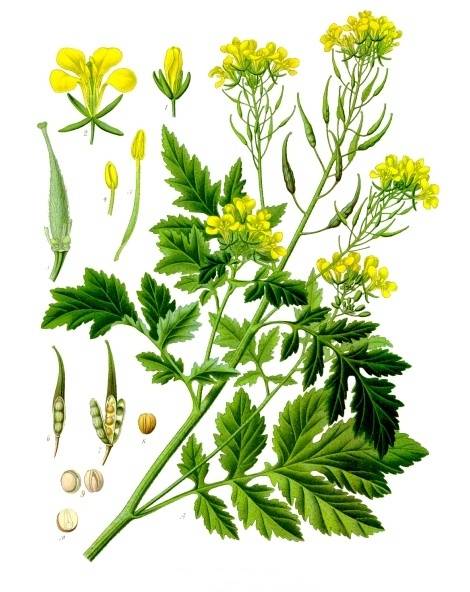Description of white mustard:
White mustard (white mustard) Sinapis alba Sinapolis alpinus – Cruciferae Annual plant growing from a quarter to half a metre in height. Stem cylindrical, covered with small hairs. Leaves are alternate and cleft on the stem. The individual leaflets are toothed. Flowers yellowish-pink. The fruit is bejeweled.
Occurrence:
Temperate terrestrial areas; cultivated in many places and also found wild in some places.
Part to be collected:
The seeds are collected and marketed as Semen Sinapis alba.
Active substances:
Sinalbin, glycosides, myrosine ensym, sinapin and about 30% fatty oil.
Cultivation:
Not very fastidious in soil, but grows best in calcareous loamy soils; – Not sensitive to climate or frost. To grow mustard, the soil must be ploughed in the autumn. The seeds are sown 30-40 cm apart in the soil fertilised the previous year. The seed requirement is 5 to 6 kg per hectare. Yield per acre is 4 – 5 q (mazsa) of seed per acre.
Harvesting and drying:
White mustard seeds should be harvested at full maturity, i.e. when the seeds are yellowish and the seed heads are yellowish brown in colour. The mustard is harvested with a scythe and then dried in bundles. After drying, the seeds are pitted.
Processing and marketing:
White mustard is grown mainly for its fatty oil. Its use in medicine is of minor importance. Source: Dr. Ferenc Darvas and Dr Gyula Magyary-Kossa,Domestic medicinal plants, their production, marketing, effects and medicinal uses


